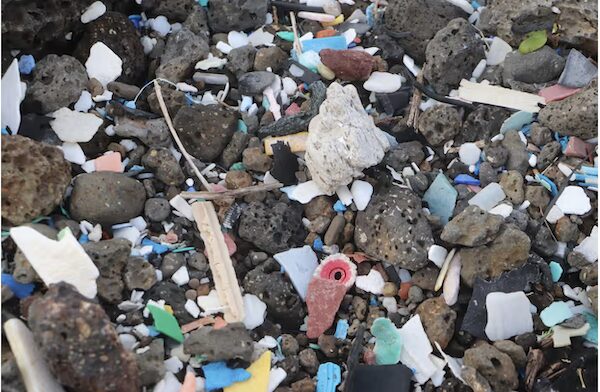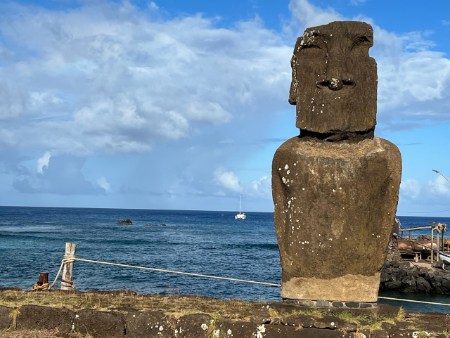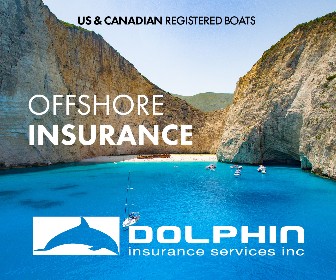Easter Island: Coping with the World’s Plastic Rubbish
Residents of one of the world’s most remote islands are having to deal with a flood of multinational plastic, much of it tossed overboard by the factory fishing ships hoovering up sealife just offshore.
Published 10 months ago, updated 9 months ago
Dealing with a Flood of Plastic Waste
About 2,300 miles west of central Chile, Easter Island (also known as Rapa Nui) is among the most remote spots on Earth – and among the most polluted.
It is estimated that 50 times more plastic washes ashore on these beaches than on the Chilean mainland, largely a result of the vast spiralling current known as the South Pacific gyre.
This current acts like a funnel, sucking in plastic from as far away as the Galápagos Islands and New Zealand and, with every tide, depositing a wave of floating rubbish on the island.
Fish bins and plastic debris
From a distance, the colourful beach at Ovahe seems a postcard-perfect mosaic of natural beauty. Craggy volcanic boulders, pockmarked from bubbling lava, jut from the sand, garnished by a necklace of pastel-coloured corals and seashells pounded to pieces by the wild, crashing surf.
As the waves pull back, however, another reality emerges. The sand holds few corals or shells. Instead, the high-tide mark is a multinational carpet of plastics polished into an array of bleached Coca-Cola reds and Pepsi blues.
“Look at all this,” says Kina Paoa Kannegiesser, 22, using a kitchen sieve to scoop up bottle caps, shampoo bottle shards and disposable razors. The ocean rubbish is crammed into every nook and cranny along this remote beach on Easter Island.


Picking through the sand, Paoa Kannegiesser holds an example of a coral colony forming on the lattice of a plastic fish bin, discarded by the industrial fishing fleets that almost encircle this island as they chase the world’s dwindling schools of tuna.
She collects fish bins by the dozen and lately has been finding coral that has fused with the debris to form an organic-plastic sandwich.
Seven years ago, when she was 15, Paoa Kannegiesser joined an environmental club at her Easter Island school, as she sought to recycle beach plastic into art.
She was hooked and now, twice a week, putters the 15 miles from one end of Easter Island to another in her mother’s battered car to fill sacks with plastic pieces sifted from the sand and picked from between the rocks.
“The plastic is in the water for such a long time that animals are attracted to it,” she says. Combing through a tidal pool, she notes, “all these species living and growing on plastic”.
Taking all the plastic she collects at the beach – 10kg (20lb) on an average mission – to her back-yard workshop in the island’s capital, Hanga Roa, Paoa grinds it up and pours it into moulds. The debris is then melted into the shape of Easter Island’s iconic stone statues, or moai.


COVID Shut down Prompts Island Clean-Up
On the hills above Hanga Roa, the Orito recycling plant receives mountains of rubbish collected by civic cleanup patrols. During the Covid-19 pandemic, when tourism to the island shut down, hundreds of islanders spent months scouring the beaches as they removed an estimated 11 tonnes of waste.
Plastic found at the recycling plant often reveals its origin. One panel carries the name of a Chile-based fishery, El Golfo. Other pieces, from the Wellington Trawling Company and United Fisheries, are from ships out of New Zealand.
From Rivers to the Ocean
A study by the Catholic University of the North in Chile calculated that 4.4m pieces of rubbish a year – or more than 500 pieces an hour – reach Easter Island’s shores.
“The Chilean government must talk to their municipalities to get them to stop dumping trash into their rivers,” says Felipe Tepano, a Rapa Nui elder who presides over the island’s powerful Consejo del Mar (Council of the Sea).
“If they dump it in the river, the river dumps it in the sea, and three or four years later, it arrives here. My legacy to my grandchildren should be that they can still eat fish,” says Tepano, who, while gutting tuna a few weeks earlier, found a bewildering collection of plastics inside it. Had the tuna eaten a smaller fish carrying the plastic? Had it gulped down the ball, thinking it was food?
Regardless of how it got there, says Tepano, the plastic had clogged up the fish’s intestines.
“That fish couldn’t poop,” says Tepano. “The fish gets confused and eats the plastic. Now it is dangerous to eat fish.”
At a plastics summit held on the island in April, Tepano put pressure on the United Nations Environmental Programme to finance a pilot project to collect ocean plastics. Who better than locals to collect floating plastic as they fished, argued Tepano, who proposed an incentive that would pay 2,000 pesos (£1.75) for each kilogram of plastic recovered.
………………………
To read the full Guardian article – click here.
………………………
Find out all news, reports, links and comments posted on Noonsite, plus cruising information from around the world, by subscribing to our FREE monthly newsletter. Go to https://www.noonsite.com/newsletter/.
Related to following destinations: Chile, Easter Island, Hanga Roa, New Zealand
Related to the following Cruising Resources: Cruising Information, Environment, General, Volunteer Projects for Cruisers, World Regions Information





